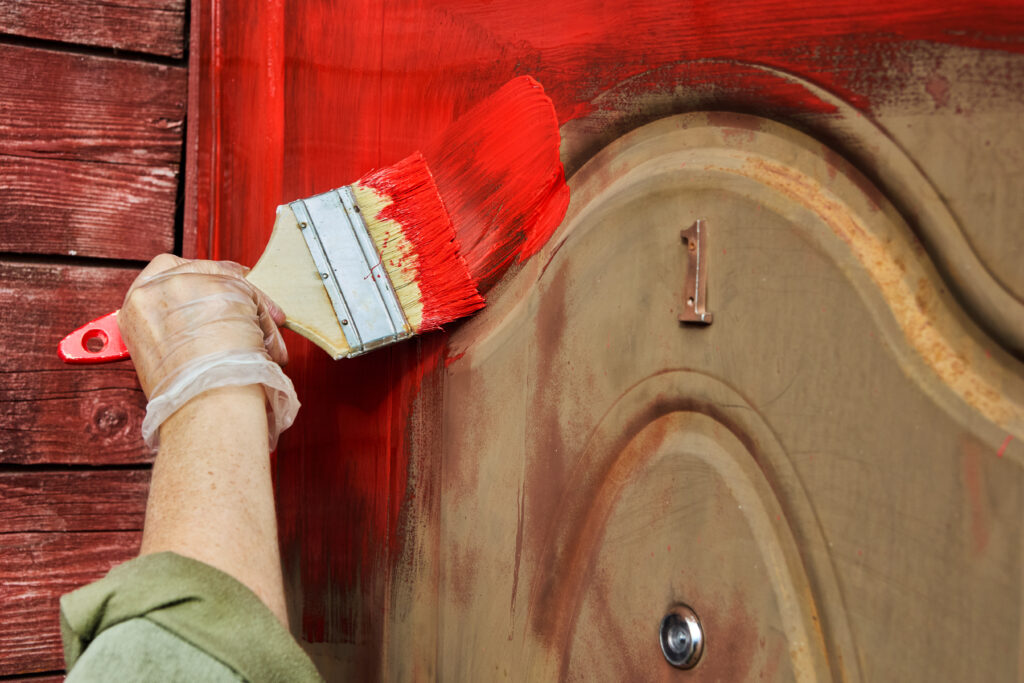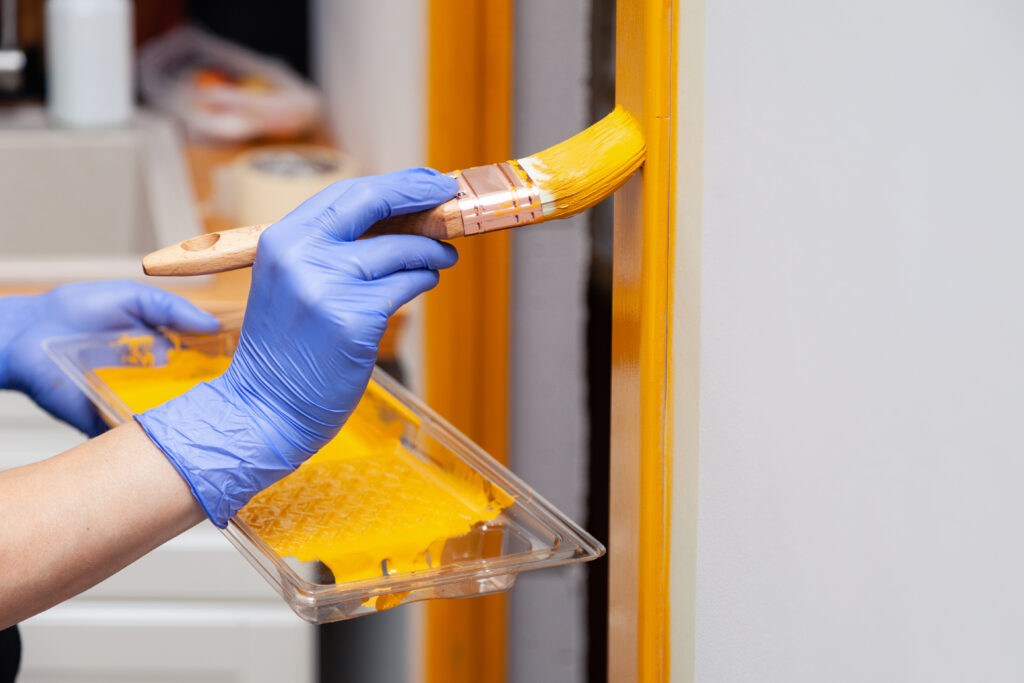Traditionally, people link home insulation to thick materials like fibreglass, foam boards, and double glazing. However, new technologies and product innovations are sparking strong interest in paint and insulation benefits. Some paints, including reflective and insulating types, claim to help regulate temperature and improve energy efficiency at home. But how well do these products really work? What does current research tell us about their practical use?
This guide examines the paint-insulation connection. We explore thermal paint varieties, their practical performance, and how they enhance broader paint and home maintenance strategies. We also assess their value for Canberra homeowners facing scorching summers and frosty winters.
1. Understanding the Concept of Insulating Paint
Insulating paints, or thermal barrier coatings, aim to cut heat transfer through surfaces. They usually contain ceramic or reflective materials. These compounds reflect radiant heat or reduce heat conduction. The goal is to reflect heat away in summer and hold warmth inside during winter. This could improve comfort and save energy.
How well these paints work depends on their formula, how they are applied, and the local environment. They cannot replace traditional insulation. However, they might support other systems in a complete energy-saving strategy.
2. How Insulating Paints Work
These paints work by including tiny insulating particles. Examples are ceramics or reflective pigments. These components reflect infrared radiation or slow heat moving through walls and ceilings. Some formulations can create measurable temperature changes on surfaces and inside rooms.
But their actual thermal resistance is far lower than bulk insulation. Therefore, insulating paints work best as add-ons, not the main insulation.
They are especially good on outside surfaces hit by direct sun. This links them to UV-protective coatings. These aim to limit heat build-up and protect paint from sun damage.
3. Applications in Roof Painting
Using thermal or reflective paint on roofs is one of the most effective approaches. Roofs get the most sun. Applying reflective coatings can lower surface temperature a lot. In Canberra, where summers get very hot, this helps regulate indoor temperatures better.
The reflective coating cuts down heat soaking into the roof space. This reduces the strain on cooling systems. Studies indicate reflective roof coatings can drop roof temperatures by about 30 per cent. This might lead to noticeable energy savings in warm months.
When thinking about roof painting Canberra cost, consider long-term energy savings against the upfront price. Thermal coatings often cost more than standard paint. Yet, their ability to reduce heat gain makes them a smart pick for eco-aware homeowners.
4. Energy-Saving Benefits of UV-Reflective Paint Technologie
Products called UV-protective coatings mainly fight damage from ultraviolet light. Many also have reflective qualities that lessen heat absorption. In high-UV climates like Canberra’s, these paints can keep interiors cooler.

These coatings are great for homes with dark exterior walls, which attract more heat. Using UV-reflective paint here can offset this effect. It also makes the paint last longer, cutting down on paint and home maintenance frequency and costs.
Plus, UV-protective paints guard against fading and surface damage. Their main job is preserving looks. Yet, the extra heat reflection adds value for energy-saving households.
5. External Wall Application and Performance
Using insulating or reflective paints on outside walls can reduce heat transfer. This is most helpful on west and north-facing walls getting strong sun. The thermal effect is less dramatic than bulk insulation. But the combined benefit is worthwhile, especially with energy-efficient windows and shade.
A well-prepped and painted exterior using these products reflects solar heat. This leads to cooler walls and better comfort inside. Painters in Fraser and other Canberra areas find these coatings useful for brick or rendered homes. These homes hold heat all day and release it slowly at night.
6. Interior Paints with Insulation Properties
Some interior paint products also claim insulation benefits. These often contain microscopic insulating beads or reflective pigments. They suit older homes where wall cavities lack insulation or retrofitting isn’t possible.
Interior insulating paints can slightly reduce heat flow through walls. This might be noticeable in small rooms like bathrooms. However, the effect is small compared to proper insulation. You might feel a difference on the wall surface more than in the whole room.
Apply several coats for best results. View their impact as part of a wider paint and home maintenance plan. This should include sealing gaps and insulating windows too.
7. Real-World Limitations and Performance Variables
Manufacturers sometimes claim big thermal gains from insulating paints. Independent research shows mixed results. Many factors affect performance. These include the surface material, paint thickness, sunlight exposure, and building direction.
For example, paint acts differently on masonry versus timber. A shaded wall won’t see the same benefit as a sunny one.
Also, the application method, drying temperature, and number of coats matter. Hiring the best painters in Canberra helps optimise these factors. This boosts the chance of getting real, measurable benefits.
8. Cost Considerations
Homeowners must weigh costs when looking at paint and insulation benefits. Premium insulating or reflective coatings cost more than standard paints. This is due to special ingredients and manufacturing.
But potential energy savings and less frequent upkeep can balance this cost over time. High-performance coatings are often more durable. This might mean repainting less often, offering further savings.
When budgeting for any project involving these paints, include prep, labour, and future paint and home maintenance. This gives a clearer picture of the long-term value.
9. Complementing Existing Insulation Systems
Think of insulating or reflective paint as a helper, not a replacement. These products boost existing insulation but rarely save much energy alone.

For instance, a home with good roof insulation still benefits from a reflective roof coating. Similarly, UV-protective coatings on walls protect surfaces and reduce heat, even with internal insulation.
This combined approach gives a balanced result. It improves looks, saves energy, and protects surfaces together.
10. Suitability for Canberra’s Climate
Canberra’s climate is ideal for thermal and reflective coatings. It has hot summers, cold winters, and strong UV light. Good insulation and ventilation handle the extremes well. Adding performance-boosting paint gives extra comfort and efficiency.
Suburbs like Fraser, with older or sun-exposed homes, gain from these advances. Painters in Fraser meet clients wanting better home performance without big renovations. Thermal coatings offer a subtle but useful solution here.
For practical ideas on staying warm without high energy costs, see the Australian Government’s guide on how to keep warm for less this winter. It offers valuable tips that align with efficient paint and home maintenance strategies.
11. Reflective Paints and Environmental Impact
Using reflective coatings supports environmental goals. It can reduce reliance on air conditioning. Lowering indoor temperatures naturally cuts electricity use and shrinks a home’s carbon footprint.
For eco-focused homeowners, this is a meaningful step toward sustainability. The individual impact might be small. Yet, widespread use of UV-protective coatings and reflective paints could cool urban areas and build environmental resilience.
12. Maintenance and Reapplication
Like any paint, insulating and reflective types need regular upkeep. Weather, sun damage, and wear reduce their effectiveness over time. Make paint and home maintenance routine. Inspect surfaces yearly for fading, peeling, or chalking.
Touch-ups or fresh coats might be needed every five to seven years. It depends on exposure and product quality. Staying proactive with maintenance keeps the thermal and reflective benefits strong long-term.
13. Future Trends and Innovation
Paint industry technology keeps improving insulating and energy-saving products. Future innovations may offer better thermal resistance, longer life, and more colour choices. This will attract more homeowners.
Growing focus on sustainability in construction means more investment in high-performance coatings. In this changing scene, paint and insulation benefits will likely become more important for new builds and renovations alike.
Conclusion
Insulating and reflective paints don’t replace standard insulation. However, they offer valuable extra benefits when used right in suitable spots. They improve roof performance and shield walls from sun damage. These coatings fit into a whole-home approach to energy efficiency.
For homeowners in Canberra and nearby areas like Fraser, adding these products to a full paint and home maintenance plan is smart. They can boost indoor comfort, cut long-term energy costs, and preserve exteriors. These paints deliver real advantages.
Knowing their limits and setting realistic expectations is crucial. With proper prep and application by the best painters in Canberra, insulating paints help create a more comfortable, efficient, and sustainable home.
Frequently Asked Questions
Does paint provide insulation?
Paint supports insulation by reflecting heat and protecting surfaces, but it doesn’t replace bulk insulation materials.
What are the paint and insulation benefits for homes in Canberra?
Benefits include better surface temperature control, reduced UV damage, and improved thermal comfort alongside standard insulation.
Is roof painting worth it in Canberra’s climate?
Yes, especially with reflective coatings. It reduces summer heat gain and boosts energy efficiency.
How much does roof painting in Canberra cost?
Costs vary by roof size, access, paint quality, and prep work. Seek professional quotes.
Can I use insulating paint inside my home?
Yes, particularly on ceilings or walls in uninsulated spaces like bathrooms for supplementary temperature control.
